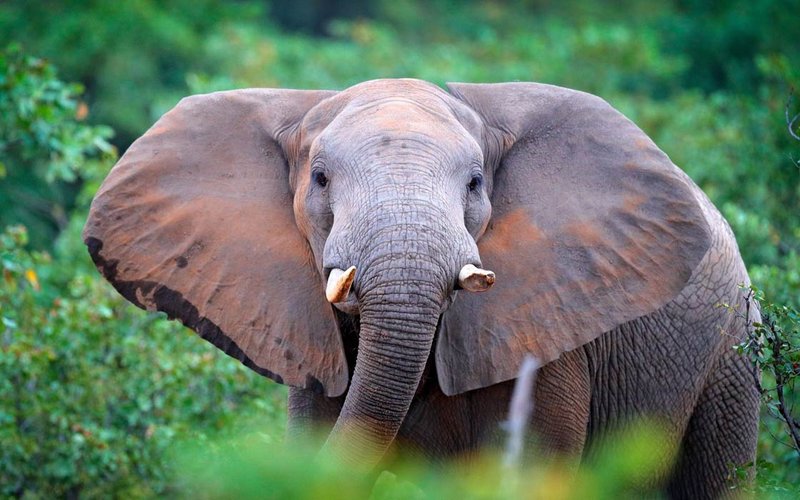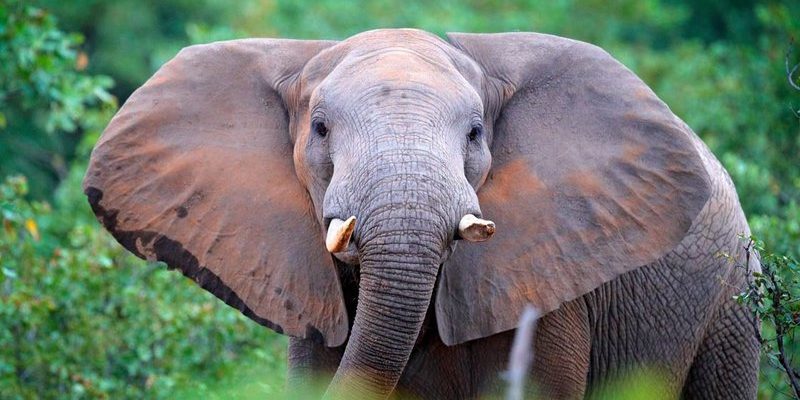
These elephants are not your average wildlife sighting; they play a critical role in maintaining the ecosystem of the forests they’re part of. Understanding them gives us not just a glimpse into their world but also helps us appreciate the delicate balance of nature. So, what makes the African forest elephant so fascinating? Let me take you through some intriguing facts that might just make you fall in love with these gentle giants.
1. Unique Size and Shape
When you picture an elephant, you might envision a huge, lumbering creature with massive tusks and a thick body. But the African forest elephant is a bit different. They are generally smaller than their savanna cousins, standing about 8 to 10 feet tall at the shoulder and weighing between 5,000 to 10,000 pounds. Their bodies are more compact, and they have a rounder face.
The most noticeable characteristic? Their smaller tusks. Unlike savanna elephants, forest elephants have tusks that are straighter and thinner, perfect for navigating through the dense underbrush. You might be wondering how these adaptations help them. Well, their unique shape allows them to reach for fruits and branches high up in the trees without getting snagged.
2. Key Players in Their Ecosystem
Here’s the thing: the African forest elephant is more than just a pretty face. They serve as a vital part of their ecosystem. These elephants are often referred to as “ecological engineers.” How? By munching on fruits, leaves, and bark, they help disperse seeds throughout the forest.
Imagine a living bulldozer, moving through the undergrowth and creating paths for other animals. As they feed, they also encourage the growth of new plants. In doing so, they contribute to the health of the entire rainforest, ensuring that it remains a vibrant habitat for countless species. Without them, the delicate dance of forest life could easily spiral out of balance.
3. Communication Beyond Words
You might think elephants communicate only through trumpets and roars, but African forest elephants have a whole different way of talking. They produce low-frequency sounds, known as infrasound, which can travel long distances—up to several miles!
This means that even when they are hidden deep in the trees, they can still “talk” to one another. It’s a bit like sending a text message that can reach someone miles away, even if they can’t see you. With these sounds, they share important information about food sources, danger, or even social bonding. It’s fascinating to think about how these gentle giants maintain their relationships without needing to be visible to each other.
4. Social Structures and Family Life
Elephants are known for their strong social bonds, and African forest elephants are no exception. They usually live in family groups led by a matriarch—a wise older female who guides her relatives through life. These groups can consist of mothers, daughters, aunts, and sisters, creating a supportive network that helps raise the young.
Just like our families, they experience joy and sadness, and they even have been observed comforting one another during tough times. This sense of community is crucial for young elephants learning to navigate the complexities of their world. You might be surprised to learn how similar their family dynamics are to ours!
5. Their Diet is Surprisingly Diverse
You might assume that an elephant’s diet is all about grass and greens, but the African forest elephant has a much more varied menu. They feast on a mix of leaves, fruits, bark, and even the occasional shrub. This wide-ranging diet is essential for their health and for the forest they inhabit.
Think of them as nature’s gardeners. By consuming and spreading seeds, they help ensure that various plant species thrive. Did you know that some trees rely on elephants for seed dispersal? It’s a beautiful example of how interconnected our ecosystems are. So next time you see an elephant, remember they’re not just eating—they’re nurturing their environment.
6. The Threat of Extinction
Unfortunately, this incredible species faces serious threats. The African forest elephant is critically endangered, primarily due to poaching and habitat loss. Their ivory tusks are sought after in illegal markets, leading to a drastic decline in their numbers over the years.
And the loss of their forest homes, often due to logging and agriculture, makes it even harder for these elephants to survive. It’s heartbreaking to think about. Conservation efforts are underway, but the road to recovery is long. Supporting these efforts is crucial if we want to witness the gentle giants of the forests thrive again.
7. Their Conservation Status
Given the critical state of the African forest elephant, there are many organizations working tirelessly to protect them. These include habitat restoration, anti-poaching initiatives, and educational programs to raise awareness about the importance of elephants in their ecosystems.
One remarkable example is the work being done by local communities in Africa, who are now actively participating in conservation efforts. By developing sustainable practices, they’re ensuring that both elephants and people can thrive together. It’s empowering to see how collaboration between conservationists and locals can make a real difference.
8. Unique Habitat Preferences
African forest elephants primarily inhabit the dense rainforests of Central and West Africa. These ecosystems are rich in biodiversity, and the elephants play a crucial role in maintaining the health of these habitats. Unlike their savanna relatives, they prefer areas with thick vegetation, which provide plenty of food and cover from predators.
However, these habitats are also incredibly fragile. Climate change, deforestation, and human encroachment threaten their survival. It’s essential to recognize that protecting these elephants means protecting their homes.
9. Their Lifespan and Health
African forest elephants can live for several decades, often reaching ages of 60 years or more in the wild. They experience various health challenges, just like humans. Their teeth wear down over time, which can affect their ability to eat and digest food.
Understanding their health is critical for conservationists and researchers. By monitoring their populations and assessing the health of individual elephants, we can gain valuable insights into how we can better protect them and ensure their longevity. It’s a constant balancing act!
10. Fun Facts That Might Surprise You
Finally, let’s wrap up with a few fun facts about the African forest elephant that you might not know:
- They can swim surprisingly well, using their trunks as snorkels!
- Forest elephants have a slightly different foot structure that helps them navigate muddy, swampy ground.
- Each elephant has a unique pattern of wrinkles on their skin, similar to human fingerprints.
- They can eat up to 300 pounds of food each day!
These fun tidbits showcase just how special and unique the African forest elephant truly is.
In conclusion, the African forest elephant is not just another animal—it’s a crucial piece of our world’s ecosystem. By learning about them and supporting conservation efforts, we can help ensure that these magnificent creatures continue to thrive for generations to come. When we protect the African forest elephant, we’re also protecting the rich, vibrant ecosystems they call home. What a wonderful legacy to be a part of!

